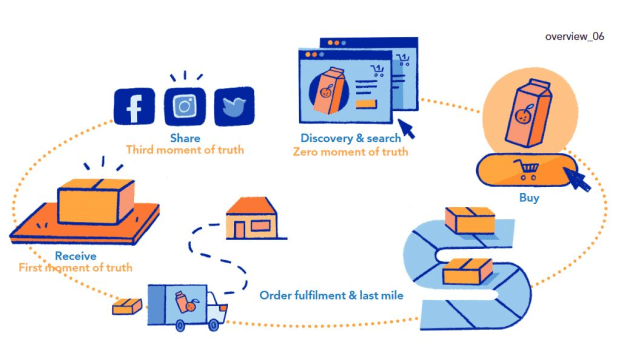The online grocery sector will benefit from smart packaging technology in the next five years, with four key trends in e-commerce emerging.
Launched yesterday, the Tetra Pak Index 2018 indicates that smart packaging technology based on unique digital codes will take both online and offline grocery in new directions.
Online grocery shopping is growing at a double-digit rate, while traditional stores are merging into an omnichannel where consumers expect to use the smartphone as their shopping compass.
Packaging will play an important role in response to the trends that are shaping the growth of online grocery, says Tetra Pak, which has identified the following four trends in this segment.
1. Convenience creation.
This is the main driver for online consumer take-up, as time-crunched consumers look for new ways to make their life easier.
Key opportunities include easy product replenishment, voice, and convenient packaging.
2. Sustainability smarts.
Pressure on plastic, and awareness of the circular economy will continue to grow, and recycling will become more important.
Consumers are wanting to know whether brands are 'doing the right thing'.

3. Personalisation preferences.
Customisation of products and personalisation in the consumer journey will be important differentiators going forward, according to Tetra Pak.
This is accelerating the direct-to-consumer trend and as many as 80 per cent of consumer-packaged goods companies are predicted to migrate to this model by 2025.
4. Technology triumphs.
Fast delivery in as little as 10 minutes is expected by 2025, changing consumer behaviour to buy more frequently and in smaller amounts, adding more complexity to logistics.
Supply chains will continue to be transformed by a raft of technologies, notably radio-frequency identification (RFID) and robotics, boosting efficiency and transparency.

The role of smart packaging
Smart packaging technologies based on unique digital codes allow each and every product package to be given a unique identifier.
These codes can be read by either data scanning devices or an ordinary smartphone, linking to vast amount of information and opening up all kinds of possibilities.
It creates an interactive channel with individual consumers, allowing brands to have a real time conversation with the consumer, sharing details on the sourcing of raw materials, nutritional facts, as well as games, promotions and environmental information.
At the same time, with insights captured through these digital codes, brands can continuously improve the shopping experience and make it ever more personalised for the consumer.
e-Retailers are also calling for unique identifiers compatible with the robotic technology used in their warehouse and distribution, as this is widely seen as the key to success in e-commerce. Data and full traceability helps them navigate complex logistics and improve efficiency, moving closer to real-time order fulfilment.
For more insights from the study, click here.








